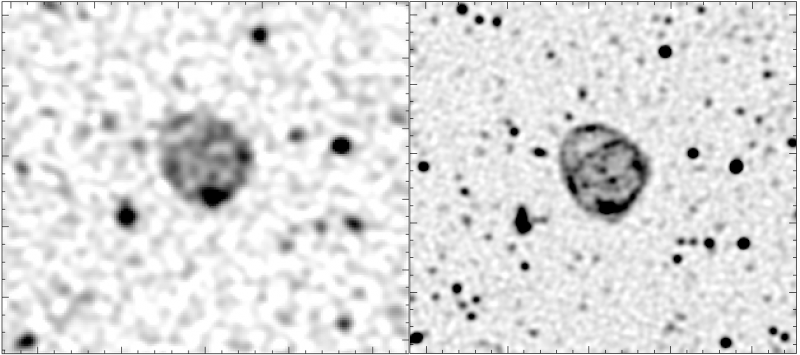
Odd radio circles
The South African Radio Astronomy Observatory (SARAO) released a new image yesterday (March 22, 2022) of what it called the astronomy’s newest mystery. It’s the image you see above. Astronomers call it an odd radio circle or ORC. Astronomers have spotted only a handful of ORCs. They’re huge, about a million light-years across (16 times bigger than our Milky Way galaxy). Despite this, the ORCs are hard to see. They’re visible only at radio wavelengths. And, so far, they are unexplained. Since their discovery in 2019, astronomers have proposed different explanations for them, including galactic shockwaves, or the throats of wormholes. What are they?
Ray Norris from Western Sydney University and CSIRO, one of the authors on a new paper about ORCs, said only five odd radio circles have ever been revealed in space. Norris said in an article released March 21 on The Conversation:
We can now see each ORC is centred on a galaxy too faint to be detected earlier. The circles are most likely enormous explosions of hot gas, about a million light years across, emanating from the central galaxy.
But. he added, scientistds still don’t know what causes ORCs, or why they are so rare.
As of now, there are three leading theories to explain what causes ORCs:
– They could be the remnant of a huge explosion at the center of their host galaxy, like the merger of two supermassive black holes.
– They could be powerful jets of energetic particles spewing out of a galaxy’s center.
– They might be the result of a starburst “termination shock” from the production of stars in the galaxy.
It was Jordan Collier of the Inter-University Institute for Data Intensive Astronomy – formed by three South African universities – who compiled the new image. He used data from the MeerKAT radio telescope in South Africa. Collier said:
People often want to explain their observations and show that they align with our best knowledge. To me, it’s much more exciting to discover something new, that defies our current understanding.
Amazing animation of Odd Radio Circles (ORCs) via SARAO pic.twitter.com/8FMmMk4loG
— Kelly Kizer Whitt (@Astronomommy) March 22, 2022
MeerKAT is cool
Fernando Camilo – who is chief scientist of the SARAO, which built and operates Meerkat – said that the ORC project “played to MeerKAT’s strengths.” And MeerKAT does have some amazing strengths. It’s produced very interesting results prior to this, unrelated to the ORCs.
Still, these astronomers said that, to really understand odd radio circles they’ll need access to even more sensitive radio telescopes such as those of the SKA Observatory, which is supported by more than a dozen countries including South Africa, Australia, the UK, France, Canada, China and India.

Bottom line: The South African Radio Astronomy Observatory released a new image of ORCs on March 22, 2022. ORCs are odd radio circles in space.
The post Odd radio circles perplex astronomers first appeared on EarthSky.
0 Commentaires